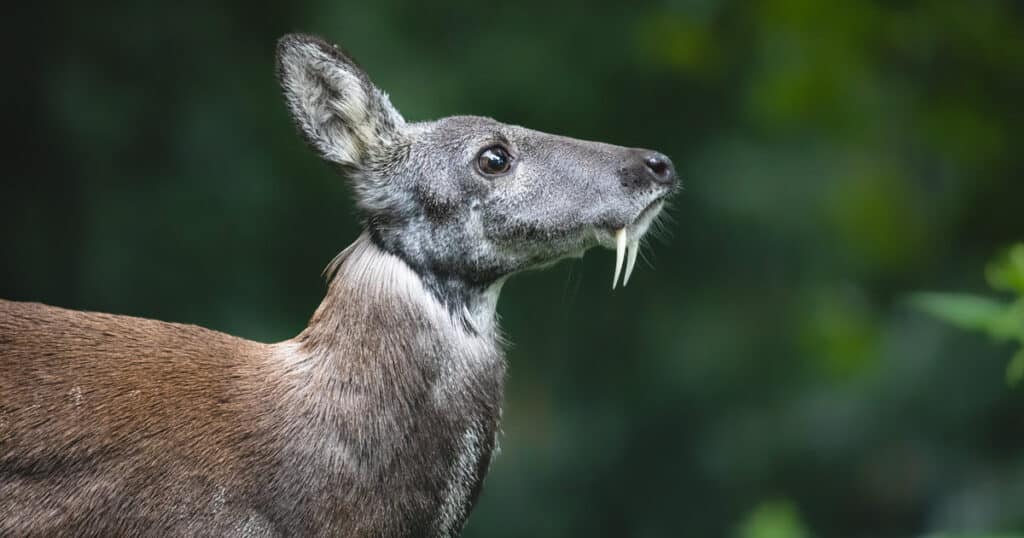A Vampire Deer sounds like the stuff of legend, but Chinese Water Deer (and several other types of fanged deer, including the Siberian Musk Deer) grow elongated canine tusks in place of antlers for many of the same reasons other types of deer have antlers.
So let’s talk about Vampire Deer. In today’s article we’ll dive into their appearance, their place in literature, lore, and legend, and the facts and reality of their existence in the wild. We’ll also explain why these deer with fangs evolved to have this unique appearance, and the advantages that a Vampire Deer’s fang-like tusks offer to Water Deer.
Let’s start with the basics.
About Vampire Deer
Water and musk deer are often referred to as vampire deer because of their long canine teeth, which resemble fangs – particularly those of male deer. These deer are not unusually aggressive toward humans, and certainly do not drink blood, but the unusual appearance of these small deer species that grow fangs instead of antlers have earned them the nickname “vampire deer.”
But do these teeth actually look like Dracula’s fangs?
Yes! In fact, these fang-like canine teeth are so long that you can see them extending lower than the lower jaw.
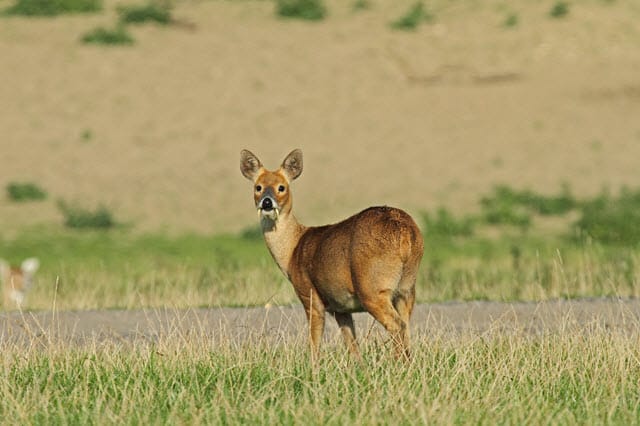
But unlike Dracula, vampire deer use these fangs in ways that are remarkably similar to how other deer use their antlers. Males use them to fight with and intimidate other males in the fight for territory and as one of the typical mating rituals during their annual breeding season.
Size of Vampire Deer
Most vampire deer are extremely small. In fact, most have an adult-size of around two or maybe three feet in height.
They’re also reclusive, like most types of deer. It’s unusual to see a vampire deer in person, as they tend to hide most of the time. Loss of habitat and poaching have led to the types of vampire deer left on the planet being endangered.
Musk Deer
One of the vampire deer types, musk deer, has been particularly victimized by poachers hunting them for their musk glands.
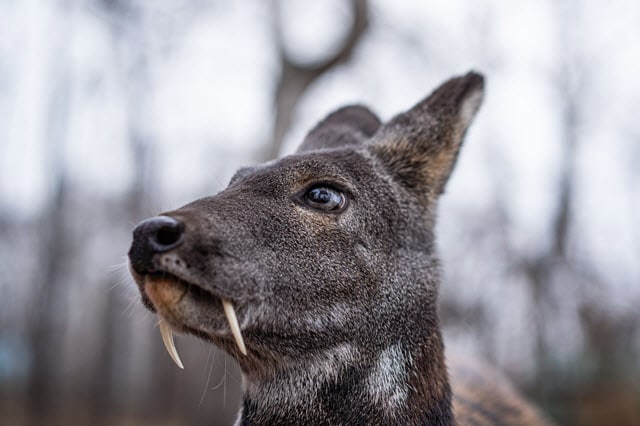
These glands are used in certain kinds of traditional medicine, as well as perfume. This musk fetches an extremely high price. In fact, in some cultures the musk of these deer can fetch prices that value it several times higher than gold.
Water Deer
The Chinese Water Deer has a small head, and it has a tapering shape that becomes smaller in the direction of the nose. This deer has oval-shaped ears, and they tend to be large (especially in proportion to the head).
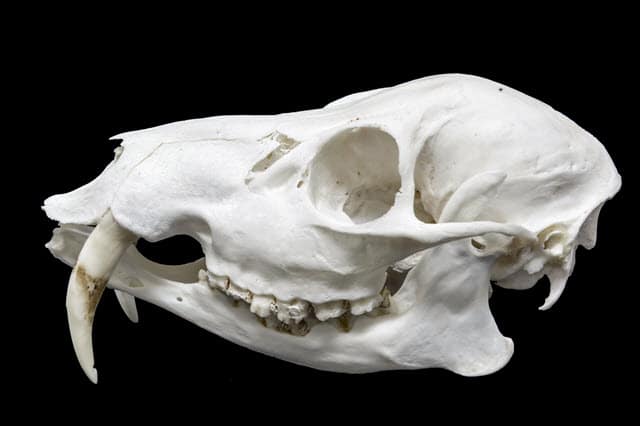
This deer’s eyes are black, as is its nose. The Chinese Water Deer’s head is typically a grayish color or a dark brown.
There are differences in the coloration of female and male Chinese Water Deer faces.
Male Chinese Water Deer usually have darker coloration in this area of the body. In both males and females, there may frequently be white fur in a band surrounding the muzzle. There may also be patches of white fur on the throat and chin areas.
Are there Vampire Deer in the United Kingdom?
While no species of vampire deer are originally from the United Kingdom, there were some individuals from fanged deer species that escaped from UK zoos. In some cases, people deliberately introduced them.
This was a misguided endeavor, and as a result there are populations of fanged deer still living in the UK.
These invasive vampire deer have dramatically increased in numbers in the UK, and this is causing problems in the environment. In fact, some homeowners consider them nuisances because of how they tend to damage vegetation.
All About Chinese Water Deer
The Chinese Water Deer is one of the deer we refer to as vampire deer. Even though this species is called Chinese, you can find it in many areas of Europe. This is an adaptable and resilient animal that is able to do well in a several different climates and environments.
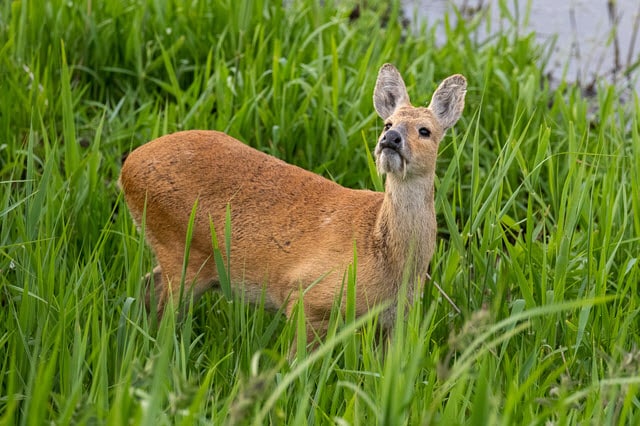
As a vampire deer, the Chinese Water Deer is believed to be an extremely primitive type of deer. Scientists believe that it was one of the first deer species to develop, arising prior to the evolution of antlers.
The Chinese Water Deer doesn’t live with other deer. Instead, it’s solitary except during the mating season. This takes place from November to December each year. Pregnancy of a female deer in this species lasts between six and seven months. She will usually have between two and six fawns at once.
This is much more than other kinds of deer. However, Chinese Water Deer fawns have a high death rate. In fact, almost half of the newborns will die less than one month of birth.
This deer has fuzzy ears with a shape and appearance that some compare to a teddy bear. As a vampire deer, it has two long canine tusks coming out of the sides of its mouth.
Just like a deer with antlers is willing and ready to use its antlers to defend itself, the Chinese Water Deer will use its tusks in self-defense if it needs to.
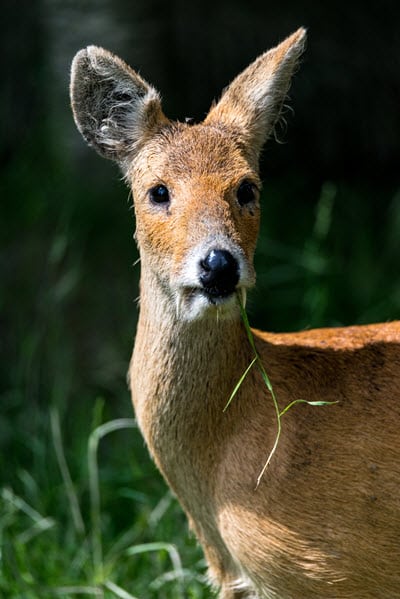
The Chinese Water Deer originally comes from East Asia, specifically in China’s Jiangsu province. This is located in the area of the Zhejiang Islands and the Yancheng Coastal Wetlands. This deer species is a good swimmer.
Other provinces in China where it’s found include Fujian, Henan, Shanghai, Hubei, and Guangdong. A related species called the Korean Water Deer lives all over Korea.
The Chinese Water Deer is a tiny animal, only measuring shorter than two feet tall even when it’s an adult. The Latin name for the Chinese Water Deer is Hydropotes inermis, and this species is known to be one of the tiniest types of deer on the planet.
When an adult, this deer (even the males) has a maximum weight of around 40 pounds. It may be as light as 25 pounds. The adult height is an average of about 22 inches.
Like other kinds of deer, the Chinese Water Deer eats vegetation. This deer enjoys grains, grass, and other kinds of vegetation. It’s highly adaptable, including in the vegetation it chooses.
Interestingly, the Chinese Water Deer’s tusks aren’t used to aid in eating in any way.
Chinese Water Deer Behavior
While it’s true that Chinese Water Deer males use their tusks to fight each other for mates and territory, as well as help fend off predators, it’s rare for a fight between two deer of this species resulting in death.
With that said, there may be severe injury when fanged deer fight.
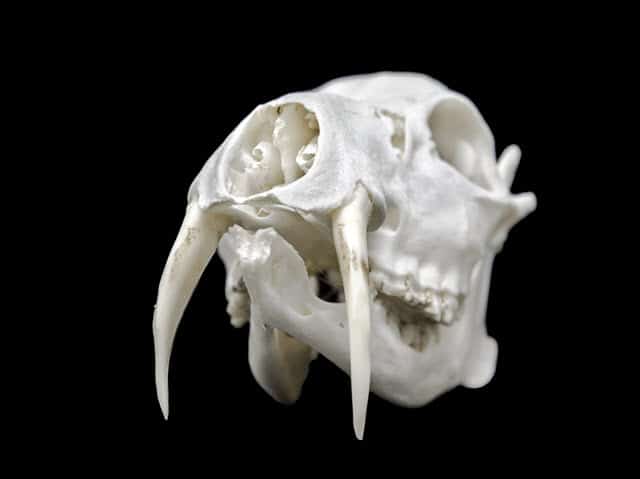
The Chinese Water Deer is most active in the evening and nighttime.
One of the ways Chinese water deer assert their territory is through marking.
For example, the male of this species will rub its forehead on trees. This process seems to leave a scent, as other deer respond to it. This is true even though there don’t seem to be any glands in the Chinese water deer’s forehead. As the deer stands and walks on the ground, its interdigital glands will leave scent too.
Another way deer will leave signs of their presence is through deposits of dung.
The Chinese water deer isn’t a herd animal.
Most animals of this species spend most of their time alone, but sometimes they are seen in pairs. This deer uses its isolated way of life to keep hidden from predators and other adversaries.
Chinese water deer are extremely territorial, but even though this is a solitary animal, they do help each other through vocalizing warnings of danger. If a Chinese water deer perceives danger, it will make a high-pitched barking sound.
Chinese Water Deer Reproduction
Chinese water deer in the wild in China have their mating season between November and January each year. Birth of fawns takes place in the later part of May extending into June. When Chinese water deer live in European zoos, the mating season is in May. The Chinese water deer’s gestation period is between 170 and 210 days.
After female Chinese water deer give birth, they take on solitary behaviors and wander off from her normal area. She carefully hides her young for about three weeks. The fawn can only be seen when the doe goes to it to give it a chance to suckle. Chinese water deer fawns are similar to other kinds of fawns in that they have a coat pattern that helps camouflage them.
Chinese water deer fawns feed on milk for several months. Female Chinese water deer are mature when they reach between 7 and 8 months in age. Males, on the other hand, are mature at around 5 or 6 months.
Chinese Water Deer Preferred Habitat
This species prefers living in wetlands, which is how they got their name. Their love for water is a reason why it developed great swimming ability. In fact, this deer is able to tread water for as long as seven miles without taking a break.
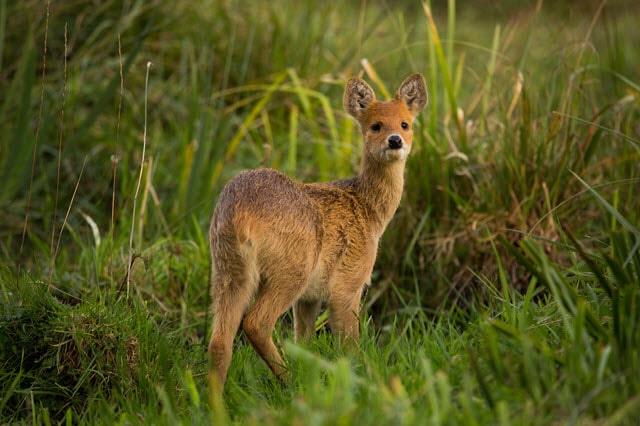
It’s because they’re able to swim so well that the Chinese Water Deer has flexibility when it come to travel. If they cannot find enough food in one area, they can swim to another to find new food sources. And as mentioned earlier, this is a highly adaptable species able to survive and breed in different kinds of environments.
The fact that some of the Chinese Water Deer’s original environments included colder regions is one reason why this species has been able to thrive in areas of Western Europe. They tend to do best in places with some similarities to where they tend to live in East Asia.
The fact that populations of Chinese Water Deer have flourished in the United Kingdom has led to a law prohibiting any further releases of this animal I not the wild of that country. In 1981, the Wildlife and Countryside Act of the United Kingdom made distributing or releasing Chinese Water Deer illegal. This was essential, as today 10 percent of the planet’s population of Chinese Water Deer live in the United Kingdom.
The adaptability of Chinese Water Deer have led to it doing well in other parts of the world, too. For example, there are areas of the United States and Argentina where Chinese Water Deer are found in the wild. There were populations in France at one point, as well. None of these animals have been seen in that country since the year 2000.
What do Vampire Deer Eat?
No, Vampire Deer do not drink blood. The fanged Chinese water deer’s adaptability means it can eat a wide variety of vegetation. Some of the most common components of this animal’s diet are beets and other vegetables, coarse types of grass, and reeds.
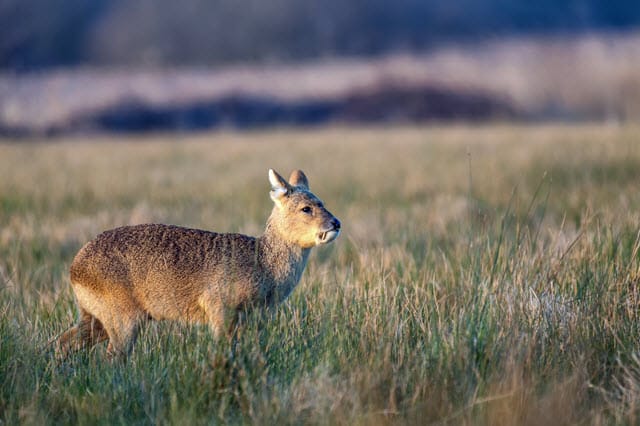
This deer’s stomach features four chambers. However, it has inadequately developed rumen pillars. This means that this type of deer has significant problems digesting plant material carbohydrates in an efficient way. This is why the Chinese water deer needs to have foods with low fiber-levels.
The foods Vampire Deer eat should have high levels of soluble carbohydrates, fats, and proteins.
The Chinese water deer is a picky eater, and it prefers new sweet grasses, forbs, and herbs. They stay away from vegetation with a lot of fiber, such as coarser grasses.
The Economic Significance of Chinese Water Deer
A threat to the population of Chinese water deer in the wild is how its hunted for colostrum. The Chinese water deer’s colostrum is used in folk medicine.
The colostrum of the Chinese water deer has high levels of antibodies and protein. It is available for about three days after a female deer births a fawn.
In Europe, Chinese water deer present in the wild are often hunted and put on the market as food. In fact, thousands of these animals are killed in Europe for this purpose every year.
About Siberian Musk Deer
The Siberian Musk Deer is another type of deer often referred to as vampire deer. It’s found in the wild in Burma, China, Southern China, and Eastern Asia. This deer also exists in the Himalayas. Musk deer are most often found in mid-range altitudes.
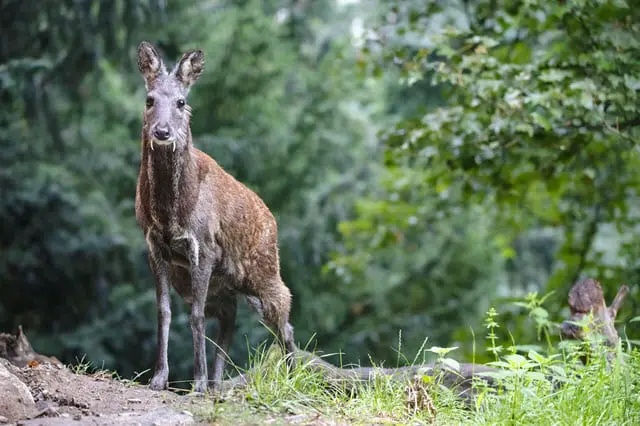
During the winter months, Siberian Musk Deer go to rather steep slopes. These have a dense cover of coniferous forest. Some of the habitats that Siberian Musk Deer favor include rock outcrops. These areas help protect the deer from its predators.
When the summer months arrive, Siberian Musk Deer primarily live in close proximity to fields that have excellent grass and vegetation, as well as in areas surrounding forest rivers. Streams are also favored by Siberian Musk Deer. This deer stays away from forests with marshy characteristics.
What Do Siberian Musk Deer Look Like?
As a vampire deer, the Siberian Musk Deer looks drastically different from most other kinds of deer.
Like the Chinese Water Deer, it has long protruding canines. Other aspects of the Siberian Musk Deer are its long hind legs with noticeable muscling, as well as forelimbs that are thin and much weaker.
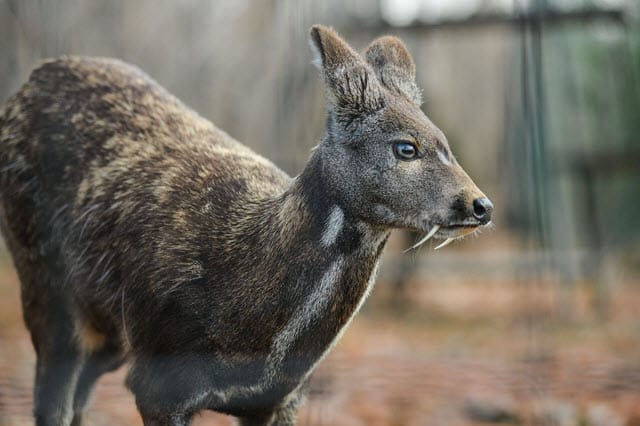
This kind of deer generally has a relatively small chest, and the back usually has a dramatic arch.
Making this deer species unusual is that the females are heavier than the males. Both males and females are antler-free, and they both have the long protruding canines that make them vampire deer.
Male Siberian Musk Deer’s canine teeth tend to grow longer as they get older. That is why when you see an older male Siberian Musk Deer, it’s teeth might stretch much lower than the deer’s lower jaw.
The Siberian Musk Deer’s coloration and coat changes as it moves through life. When this type of deer is born, it has soft hair that is short and dark brown in color. It also has white or yellowish spotting.
When the deer gets old enough to experience its second winter season, it will develop a winter coat. This winter coat has a coarser type of hair.
How do Siberian Musk Deer Behave?
The Siberian Musk Deer is most active at night or during twilight. It’s rare to see this deer, as it’s so shy. If there is heavy snow on the ground, the Siberian Musk Deer isn’t likely to be active. This deer species are generally solitary. However, they may live in small groups of up to three.
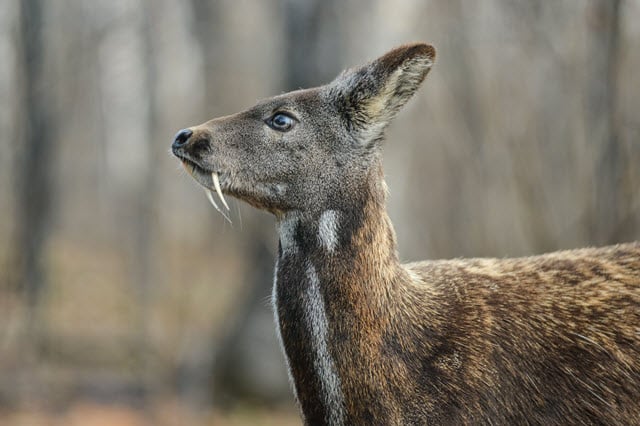
This deer lives on mountain slopes during the winter. In the summer months, they move to meadows with plenty of grass that are located in close proximity to river valleys. While this deer species is believed to have excellent hearing and vision, it has an inadequate sense of smell.
What do Siberian Musk Deer Eat?
The Siberian Musk Deer eats more than 130 types of plants. It consumes certain kinds of terrestrial bushy lichens and arboreal lichens during the winter months.
During that time of year, these types of vegetation comprise around 70% of what a Siberian Musk Deer eats.
Final Thoughts About Vampire Deer
While the appearance of deer with fangs may be startling and look like something out of legend or lore, there’s actually nothing to be afraid of when it comes to Vampire deer species like the Water Deer or Musk Deer.
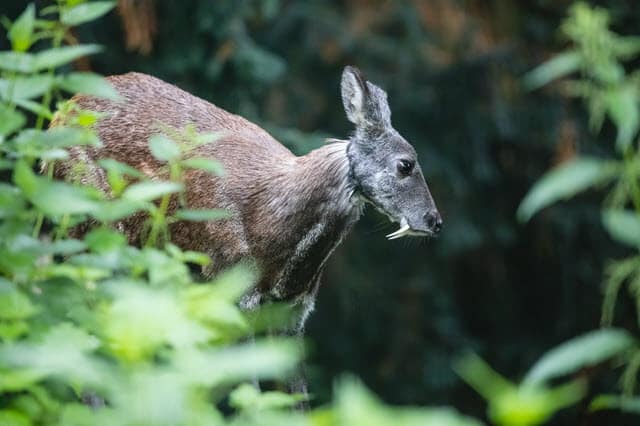
Vampire deer grow long canine teeth which serve the same purpose that antlers do for many other deer species.
While these deer do behave differently than the White-Tailed Deer or Roe Deer you may be more familiar with, they are simply another unique variation on a fascinating family of mammals.

